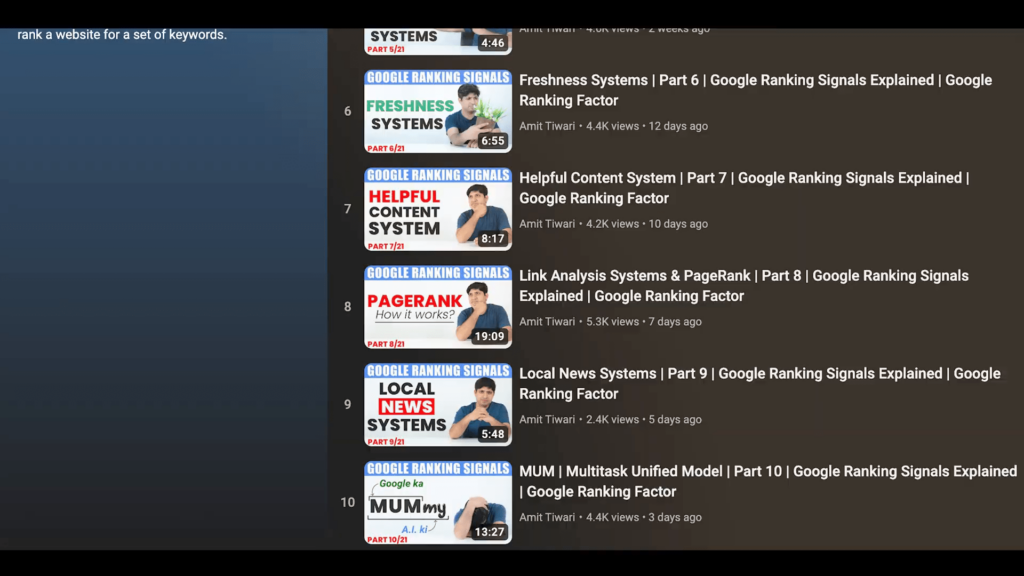It is important to note that you do not paraphrase any part of the text under any circumstances.
Search engine optimization (SEO) requires any practitioner to understand how Google ranks websites. Neural Matching System is one of the most important methods for carrying this out. This article sets out to explain the fundamental aspects of this peculiar Google ranking signal and its associated impact on SEO.
🔍 What do we mean by the term ‘Neural Matching’?
For all the ranking systems Google has come up with and the various devices available to users, the Neural Matching System may likely be the most sophisticated as far as systematic medical devices are concerned. There has been the introduction of neural matching by Google in a bid to help improve the interpretation of search queries and the results generated from such queries.
Neural Matching works through three primary functions which are:
Understanding User Queries Page: It perceives the general meaning of the questions that people type into the Google search box.
Comprehending Page Concepts: It studies concepts of pages that may be indexed and expected to be returned in the search results.
Matching Concepts: It combines the user identifier and the identifier of the ranked resourced pages to select the order of those pages about the user entry such that they are relevant.

📊 The Importance of Concepts Over Keywords
One of the features of Neural Matching worth noting is its focus on concept, rather than keywords. Old-school SEO has revolved around the use of keywords, however, this is not the case with Neural Matching. This is based on the fact that people do not just search for some keywords as should be the case with the search engines but rather search for detailed questions.
For example, rather than looking up the word “hair”, people looking for information can pose the question “How to take care of hair?” This wider kind of question enables the Neural Matching System to give better answers in relation to the reasoning of the user’s request.

🔗 Matching User Intent with Page Content
The capability of the Neural Matching System lies in correlating the intention of the user with the content of web pages. It achieves this by grasping the subtleties of both language and a given context. As an example, let us look at someone who is searching for “treatment for hair loss.” What the person will find will depend on certain particulars such as whether the person has had a hair transplant recently, or is simply losing hair.
It improves their existing technology by allowing the search engine to return the most relevant pages based on the user’s intention rather than just a match based on the key terms. It is indeed a great leap forward in terms of how search engines are able to understand a query that is thrown at it, and how search pages are ranked based on this.

⏱️ Real-Time Ranking Dynamics
It is important to note that the process of putting the web pages in order is not a one-time or static activity. Every time a user performs a search, Google rearranges the pages in a new order according to the present context. For every search, the order of web pages presented varies and there are no fixed rules.
When using a proper ranking system, Google ranks all pages to ensure that the user’s query returns the most relevant results at that particular instant.
🌟 The Evolution of Neural Matching
In 2018, Google launched the system of neural matching, which also marked its 20th anniversary. The main purpose of this system is to provide directions for the development of Google within the following 20 years, making it smarter in terms of queries and their outcomes.
Neural matching leaves no question that time is saved and its system can answer the most complicated questions. It makes use of word embedding, a method that helps the system understand words in context.
🛠️ Challenges in Understanding Natural Language
However, this neural matching system still falls short when it comes to the comprehension of people’s natural language. For example, a single term could have multiple definitions in some other case. A handbook would refer to the tools a carpenter greatly and perhaps more technically than a non-professional person would.
This discrepancy in using the language can lead to a mismatch between what the user is looking for and the content present on the site. Neural Matching’s calculations fill the gap here, providing users with answers despite their forgetting the precise words used.
📈 The Future of Google Ranking Signals
Within the context of search technologies, Google developed neural comprehension as one of the salient systems in its quest for progress. This attribute grows better by understanding the shallower aspects of users’ problems and providing more relevant resources. This evolution will determine the future demand for SEO specialists, forcing website owners to enhance the quality and relevance of content instead of relying on keyword-centered optimization.
In the next articles, we will shift our attention to the next ranking signals, which include the Original Content Systems, which will extend the insights into Google’s ranking systems that we have provided.

The better an SEO understands the principles of the Neural Matching System, the easier it will be for them to plan their operation in such a manner as to correspond to the way Google understands the user’s search query. This knowledge is crucial for improving website rankings and ensuring content is delivered to the right people.

